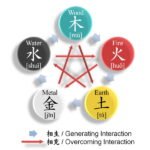
Samsung Electro-Mechanics Co., a South Korean electronics components maker, is developing camera modules customized for Boston Dynamics Inc.’s humanoid robot Atlas, according to industry sources on Tuesday.
Samsung will apply its next-generation technology for the so-called eyes of Atlas, fitted with Intel Corp.’s general-use camera module RealSense up to now.
Humanoid robots recognize and learn external movements through camera lenses. Thus, camera modules play a key role in robots’ performance.

Boston Dynamics’ new humanoid robots to be equipped with Samsung Electro-Mechanics’ camera modules are expected to be rolled out around 2030.
The supply deal between Samsung Electro-Mechanics and Boston Dynamics, owned by Hyundai Motor Co., represent a broader partnership between Samsung and Hyundai Motor groups.
They are collaborating in sectors ranging from displays to automotive electronic parts, semiconductors and robots.
Samsung Electro-Mechanics also plans to begin supplying hybrid lenses for camera modules to Hyundai Motor and its sibling Kia Corp. in 2025, said sources early this year.
Hyundai Motor is also teaming up with Samsung Electronics Co. to develop semiconductors designed for autonomous driving based on Samsung’s 5-nanometer chips.
Their cooperation in self-driving chips followed Samsung Electronics’ agreement last year with Tesla Inc. to manufacture chips for the world’s No. 1 electric vehicle marker’s Level-5 autonomous driving vehicles. It will be produced on Samsung’s 4 nm process node, according to industry sources.

Samsung Electro-Mechanics is endeavoring to expand in the markets of camera modules for automobiles, robots and artificial intelligence beyond smartphones.
Chang Duckhyun has been leading the company as CEO since December 2021. He is among the very few of chief executives of major Samsung Group units to remain in office next year.
“Samsung and Hyundai Motor will expand their cooperation into broader areas from automotive components to next-generation industries,” said an industry offocial.
By Chae-Yeon Kim and Jeong-Soo Hwang
Why29@hankyung.com
Yeonhee Kim edited this article.















